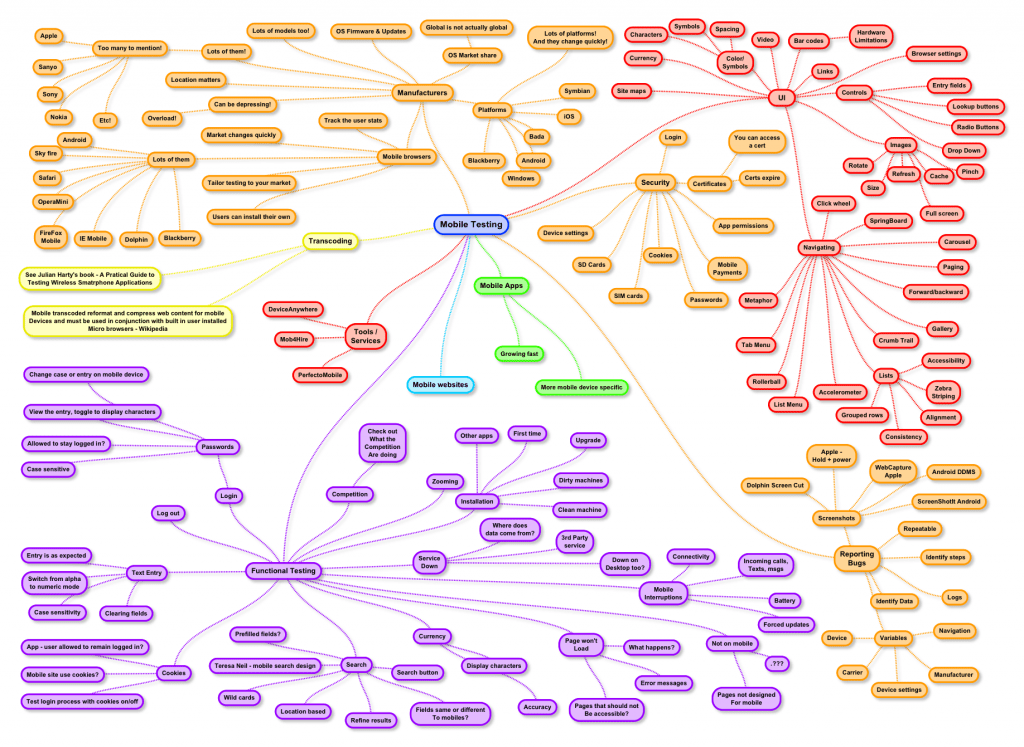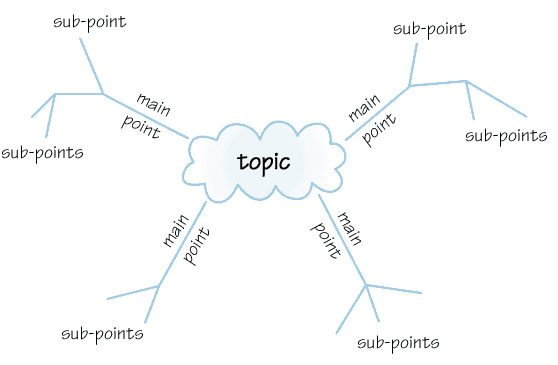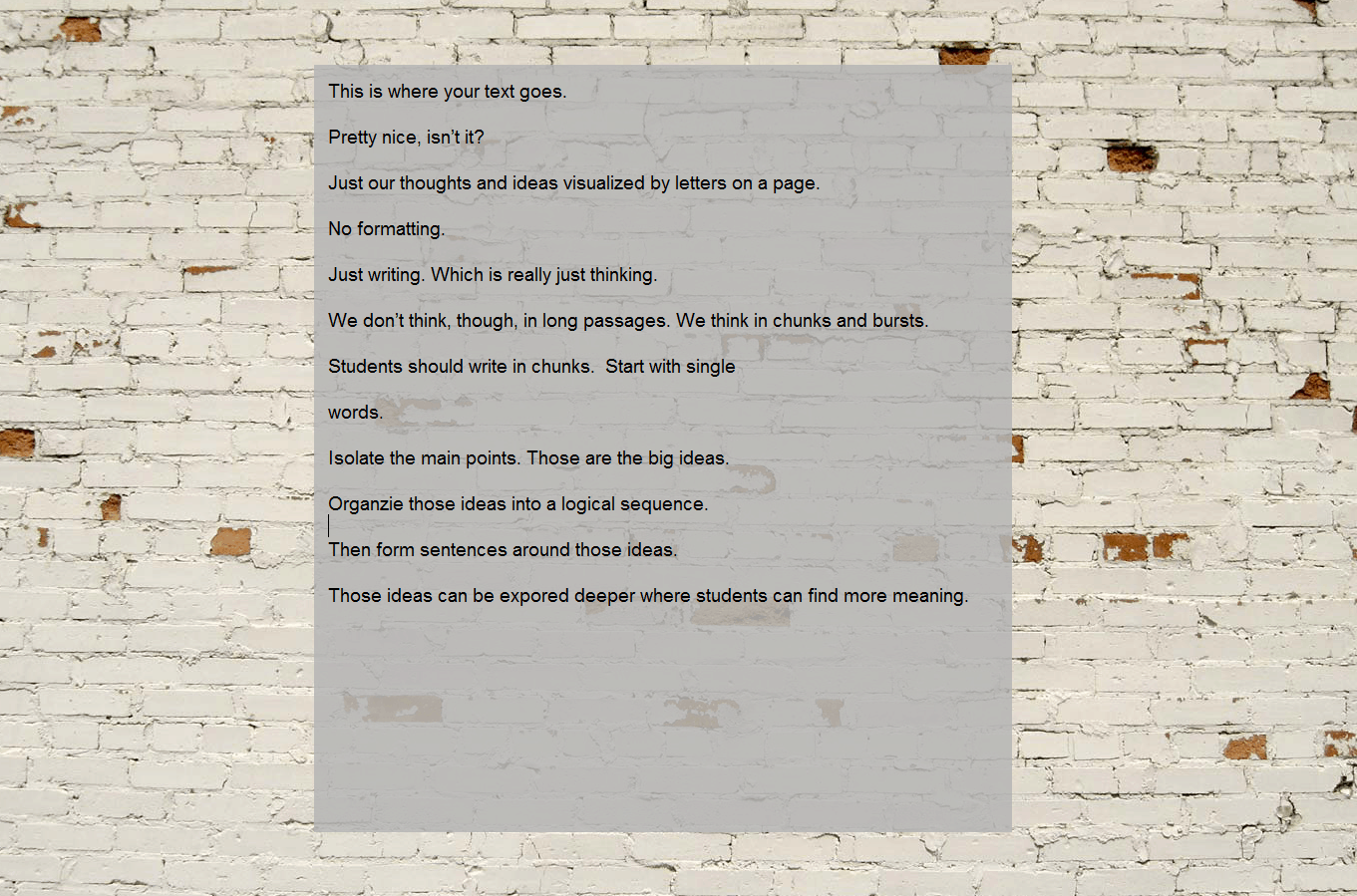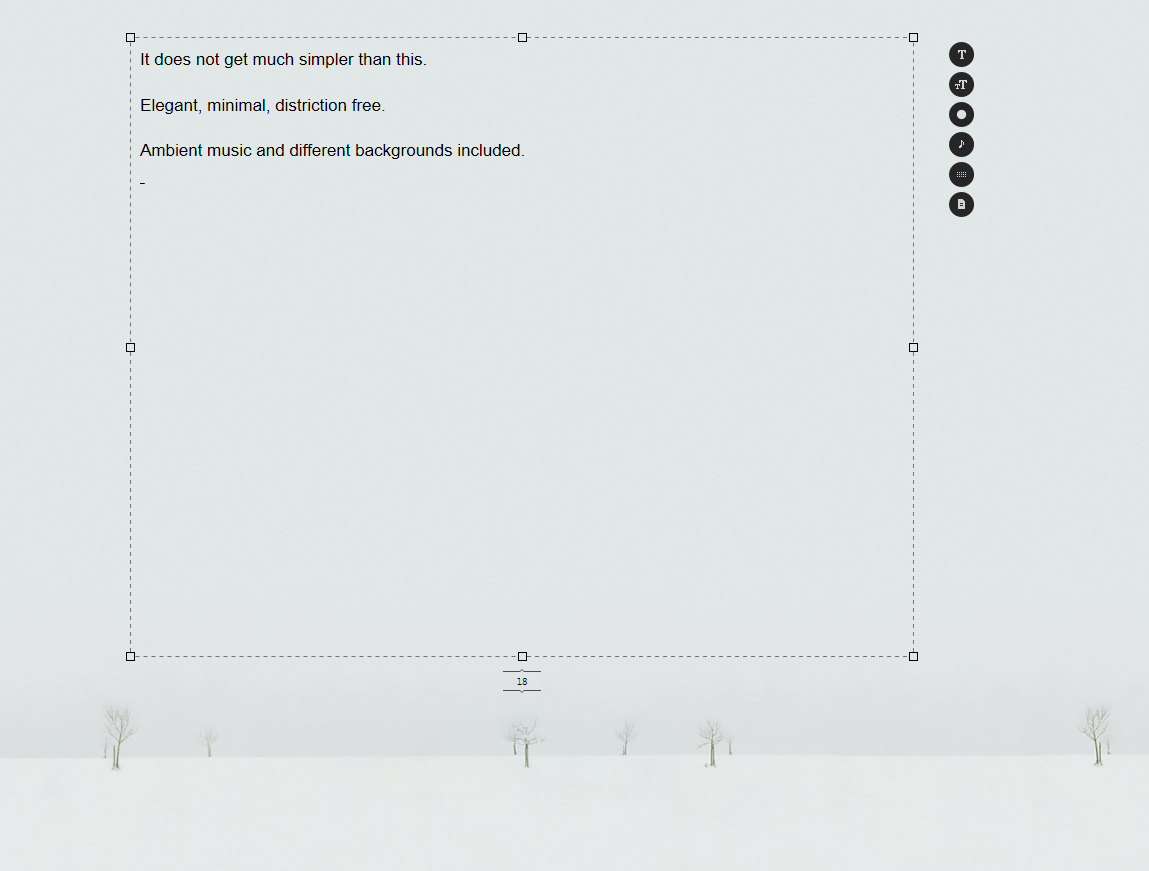Teching Out the Novice Writers

We are using tech in a lot of great ways in the classroom. There’s an app for everyone and everything. One group that often gets overlooked, though, is our young writers. The popular writing software programs offer a lot of formatting and editing tools, but they have so many built-in functions that it’s distracting for the writer during the composition process. Other parts of the writing process like brainstorming, researching, evaluating, and analyzing go unaddressed. Let’s take a look at some of the great, yet unheralded, apps out there for the beginning or emerging writers.
Brainstorming and Organizing Ideas
“Do not sit down and think what to write about. Sit down and write what you thought about.” -Ernest Hemingway
The blank page is intimidating. Writers block is often having too much to say and not being sure where to start. Topics we assign can be too broad:
“What did you do this summer? Give me two pages, single spaced.”
Students need to organize their most basic thoughts with mind-mapping strategies here. In the old, pre-technology days, we used the Judo method. We gave students a blank sheet of paper to write on, but instead of immediately attacking the front, we had students flip the paper over and start outlining. Mind mapping. They listed key words. They thought in terms of outlines. They thought.
Then they would flip the paper back over and finish it off.
Mind mapping tools can help with this process. Keep in mind that the best mind mapping tools for us are not necessarily the best mind mapping tools for young writers.
Keep it simple.
They don’t need this:
They need something simple like this:
The idea here is to get students to think before they write. This is essential for the novice writer. It’s especially essential for the ADHD or EC writer. All students need to see that writing is an extension of thinking. We know they can think. We know they can write. We just have to help them connect the two and realize that they don’t happen simultaneously very well.
Here are a few apps to start with:
Essay Map – This is an interactive graphic organizer that helps students to organize and outline their ideas for essay. Basic. Simple. Perfect.
Popplet – For the iPad, this simple interface is very easy to use.
Bubble.us – This web-based app is point can click. Easily drag ideas to make connections and organize.
Your advanced writers, your AP writers, can really tech out here and explore the advanced mind mapping apps.
Researching and Analyzing
Easy choice here. Check out InstaGrok, which is a visual search engine that helps users grasp important concept and key facts and see the relationships that connect them. Research, analyze, and evaluate in this one app.
Stripping Away the Clutter
Now for the most essential piece. Introducing the distraction-free editors, which are the marquee tech tools in this writing process.
Students are familiar with MS Word, Google Docs, Apple’s Pages, and different blogging tools, and those are great apps. They have been great for years and get better with each new release. They have a flaw for the novice writer, tough. It’s a flaw that trips up not just the emerging writer, but also the more seasoned writers, too. Those apps are filled with a multitude of formatting and editing tools that distract writers when they should be in the composition mode.
Bold this. Italicize that. Highlight here. Word count. Justify left. Justify center. Word count. Line space 1.25. Change font. Word count. Indent text. Paint format (whatever that is). Bold. Word count.
All of that is distraction. And each editor adds more and more with each new release. This is called “feature creep,” and these features are a major disruption during the creative process. These processes need to happen during “post-creation” but most writers tend to tinker with them when their brains should be focused on composition.
There are many distraction-free, Zen editors. Check these out:
That’s the editor at FocusWriter. You can change the background and the fonts to a small degree, but this is what you get. Here’s how FocusWriter describes themselves:
FocusWriter is a simple, distraction-free writing environment. It utilizes a hide-away interface that you access by moving your mouse to the edges of the screen, allowing the program to have a familiar look and feel to it while still getting out of the way so that you can immerse yourself in your work. It’s available for Linux, Windows, and Mac OS X, and has been translated into many different languages.
OmmWriter can be used on Mac, Windows, and the iPad. This is another Zen editor that has a choice of several backgrounds and ambient music which can be turned on and off. From OmmWriter:
OmmWriter is your own private writing room where you can close the door behind you to focus on your writing in peace. Everywhere you go, you have access to a beautiful distraction-free writing environment where your authentic voice is free to go where it is meant to go.
Writer: The Internet’s Typewriter Find this app on the Chrome store or just use this link at bighugelabs.com. This is a web-based, distraction-free, minimalistic editor.
Content Check
Now that the composition part is down, have students run their writing through a plagiarism detector. This is essential in research projects. Keep this in mind: You assigned them a topic that they know nothing about, and then they had to read a half dozen works by experts on that topic before they have to write their own original piece. Let them see if they borrowed any words that were not theirs. Make this a teachable moment where they can correct their mistakes before they turn in their final copies.
Here are a few free plagiarism detectors:
Grammarly – This is both a proofreader and plagiarism detector.
Plagiarism Checker – Copy and paste your content in this web app. It will show the source of original content if any plagiarism is detected.
Finally, have your students check their writing for cliches at http://cliche.theinfo.org/. We have one or more decades of reading and writing experience than our students do, so obvious cliches to us are not so obvious to them. And we want them to avoid cliches like the plague way writers do.











Stephany K.
Hi,
thank you for this nice overview. I'll definitely have a look at the mind mind apps.
Another clutterfree text editor is byword. It is available for Mac and iPad. I can really recommend it.
Greetings
Stephany